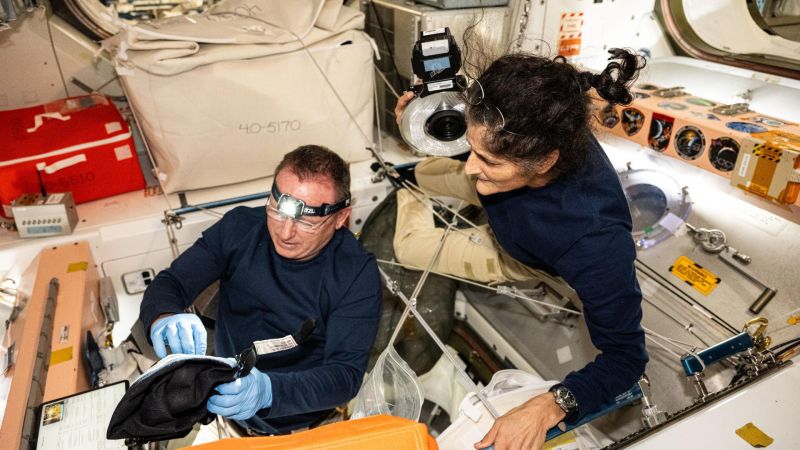NASA astronauts Sunita Williams and Butch Wilmore, both veteran space travelers, are finally set to return to Earth after an unexpected nine-month mission aboard the International Space Station (ISS). Originally planned as a short-term stay, their tenure was extended due to a mechanical failure with their scheduled transportation— a Boeing Starliner spacecraft. Instead, Williams and Wilmore, alongside their SpaceX Crew-9 mission team members Nick Hague from NASA and Russian cosmonaut Aleksandr Gorbunov from Roscosmos, boarded a SpaceX Crew Dragon capsule for their return journey, which is scheduled to begin at approximately 1:05 a.m. Eastern on Monday.
The Crew-9 mission involves routine staff rotation between NASA and SpaceX, and the capsule had initially launched in September 2023. Upon that launch, Williams and Wilmore were not on board, rather occupying two empty seats that were reserved for them due to their previous spaceflight delays. This unprecedented situation led to significant public interest because the duo had been orbiting approximately 250 miles above Earth for months on end. Their mission, concluding at 286 days, will not break any records as the longest flight in space held by the late Valeri Polyakov, who spent 437 days in orbit.
As Williams, Wilmore, Hague, and Gorbunov prepped for their journey down, the Crew Dragon capsule provided a comfortable environment, measuring about 13 feet (4 meters) in diameter. Their reentry is expected to commence around 5 p.m. ET, entering Earth’s atmosphere at speeds exceeding 22 times the speed of sound, potentially heating the craft to over 3,500 degrees Fahrenheit (1,926 degrees Celsius) and causing a communication blackout during descent. They will deploy parachutes to slow their descent, aiming to splash down safely off the coast of Florida at about 5:57 p.m. ET Tuesday. Once the capsule reaches the ocean, a SpaceX ship will assist in recovery before Williams and Wilmore can exit the capsule and breathe fresh air for the first time in months.
The mission reflected the complexities of space travel, especially concerning safety. NASA initially determined that attempting to return the crew via the Starliner would pose too many risks, leading to their integration into the Crew-9 rotation. This decision ensured the U.S. segment of the ISS remained staffed without necessitating an expensive, ad-hoc return flight.
Complications surrounding their extended mission led to criticism from external figures including Elon Musk, CEO of SpaceX, and political leaders who suggested Williams and Wilmore should have been returned earlier. Musk hinted at discussions of a potential earlier return that was thwarted for political reasons, but this was contested by NASA officials who claimed no formal request had been made to them.
Williams and Wilmore’s extended stay has been met with considerable speculation regarding their health and readiness to return to a life on Earth after such a long duration in orbit. Although reports surrounding their appearances and conditions were rife with sensationalism, NASA has assured the public of the astronauts’ health. They underwent health evaluations after returning from previous long missions, and this mission is no exception. Mental and physical acclimatization will require further careful consideration as they re-adjust after months of weightlessness.
In terms of daily life aboard the station, theirs was not one of idle waiting. Both astronauts actively participated in research and daily operations. Williams even took on the responsibility of station commander, ensuring continual work was accomplished throughout their extended mission duration. Their professionalism was underscored by Williams’ remark expressing enjoyment in being in space, something she describes as her “happy place.”
This mission highlights the challenges and unpredictability of human spaceflight, particularly as NASA and its partners navigate the complexities of space exploration while striving to maintain safety and operational efficiency. Both Williams and Wilmore have demonstrated resilience as they embraced their circumstances, continually directing focus towards their duties and service aboard the ISS. As they make their way home, they do so equipped with the valuable experiences of living and working in space, which will undoubtedly shape their future endeavors and contributions to space exploration.












